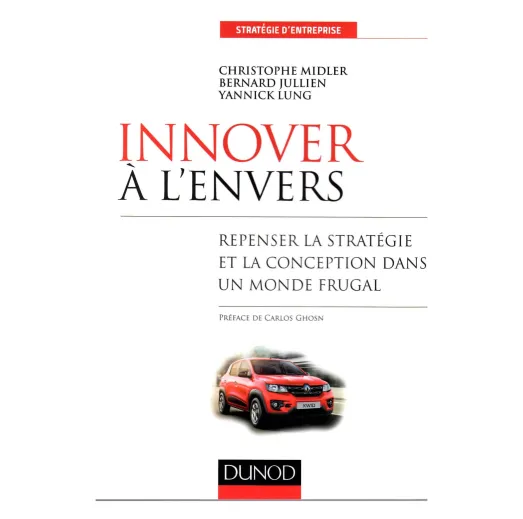Innover à l’Envers, Repenser la stratégie et la conception dans un monde frugal
Christophe Midler, Bernard Jullien & Yannick Lung

Référence
Christophe Midler, Bernard Jullien & Yannick Lung (2016) Innover à l’Envers, Repenser la stratégie et la conception dans un monde frugal, Paris, Dunod.
Résumé
Innovation is generally the sophistication of products, the incorporation of technologies bringing more advanced performance, but also costs. This innovation originates in the most advanced countries and is progressively deployed by successive derivatives to emerging or developing countries. Two major strategic movements, low-cost strategies and reverse innovation, transgress this tradition, constituting the matrix of an bottom-up innovation strategy.
The implementation of such strategies is both a key issue for the sustainability of large groups and poses many problems:
- How to articulate these strategies with the maintenance of more traditional business on the traditional markets?
- What design organization and methodologies can be used to adapt products to local needs, while the R & D tradition has been built on mature western markets?
- How to commercially deploy such products in emerging countries where distribution networks are to be built?
The purpose of this book is to answer these questions in the light of an accurate analysis of an emblematic case, the Renault Kwid project, a global car designed by the Renault Nissan Alliance for emerging countries. This car, marketed at the end of 2015 on the Indian market, represents a quantum leap in price breaks (the car is sold starting at € 3500!), but also in terms of industrial ambition (with the development of a new engine and a new box Speed), range perimeter (a joint platform for Renault and Nissan products), as in terms of target market volumes (Kwid aims at several hundreds of thousands of units in various markets).
The book is organized in two parts. The first one analyzes the Kwid project, from its strategic genesis to its current commercial deployment in the Indian market. The second draws the lessons of this emblematic success story on three different axes:
- The characterization of low-cost disruptions and development organizations that can implement them. The book defines a new category of innovation, fractal innovation, and shows the importance of creative product development form to implement it;
- The analysis of the deployment of low cost strategies in established large western groups. The book shows how, from the Logan to Kwid, program, this strategy asserted itself in the Renault group, at the same time that the skills and the methodologies were constructed and legitimated to carry it out;
- The implementation of global innovation in "reverse innovation" processes within multinational groups. The case study shows the importance of questioning the standard procedures developed in the developed countries, in a way the reverse of the "transplants" as they were praised in the 1990s on the example of automobile firms Japanese.
Mots-clés
Low cost strategy, reverse innovation, automobile, project development, indian market
Back to the list